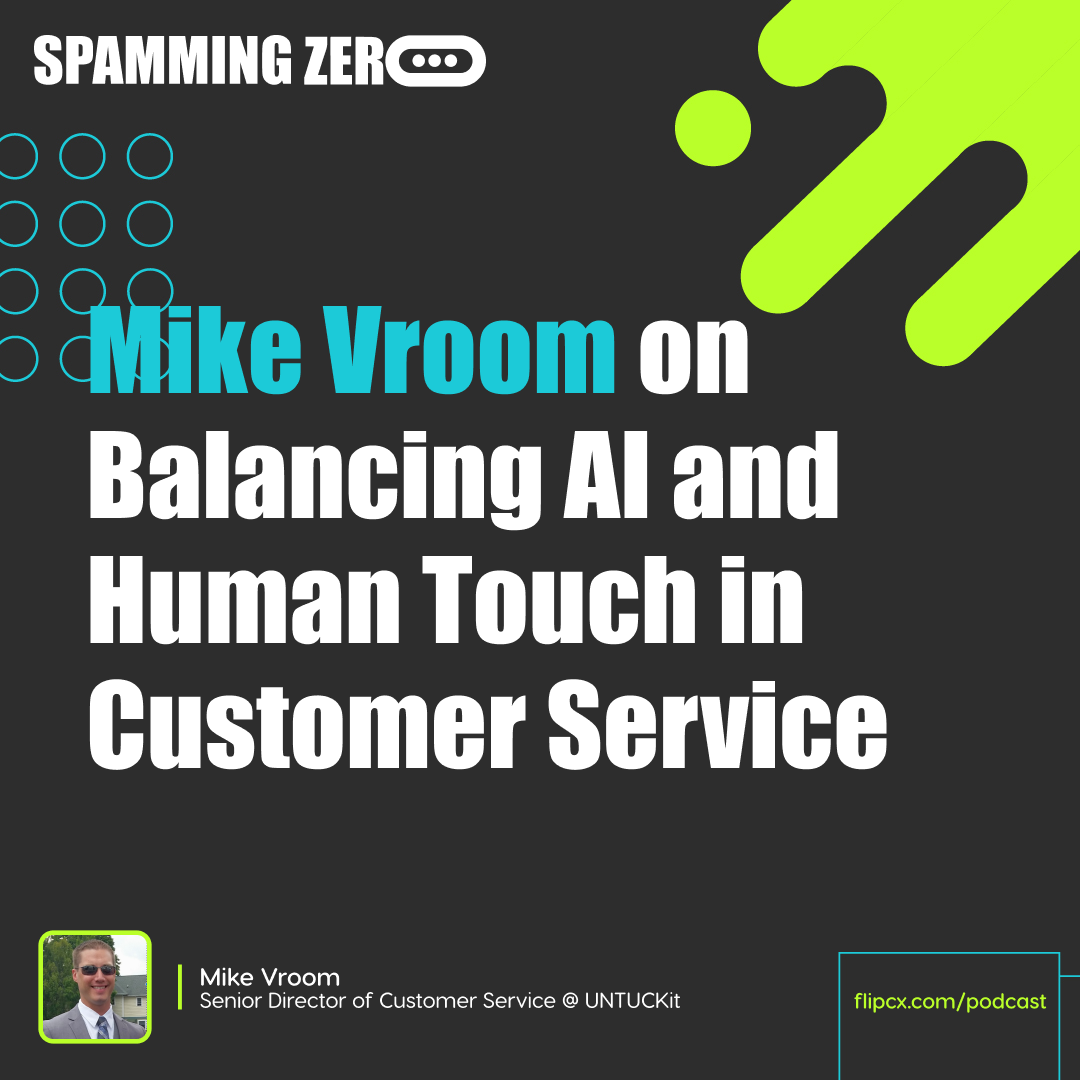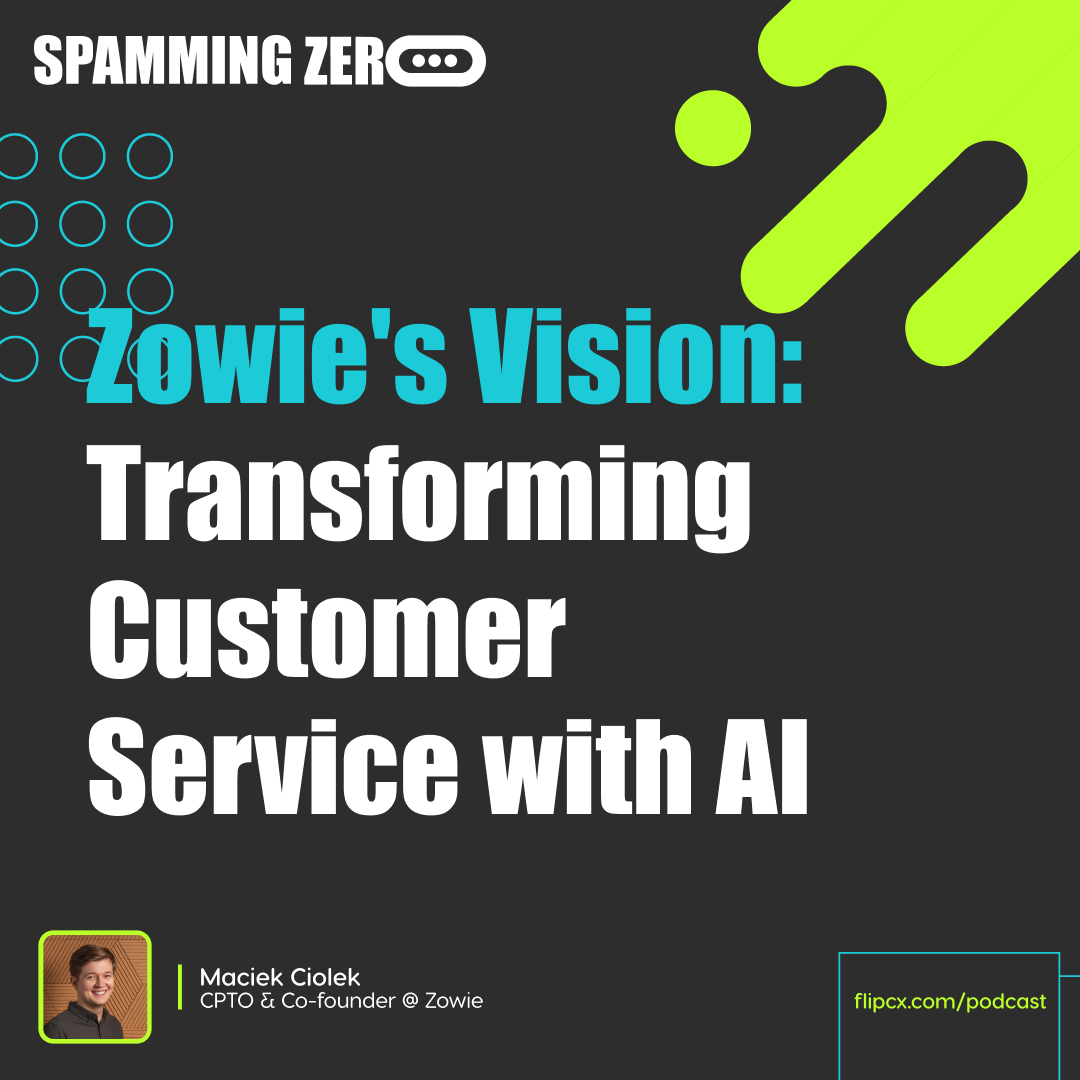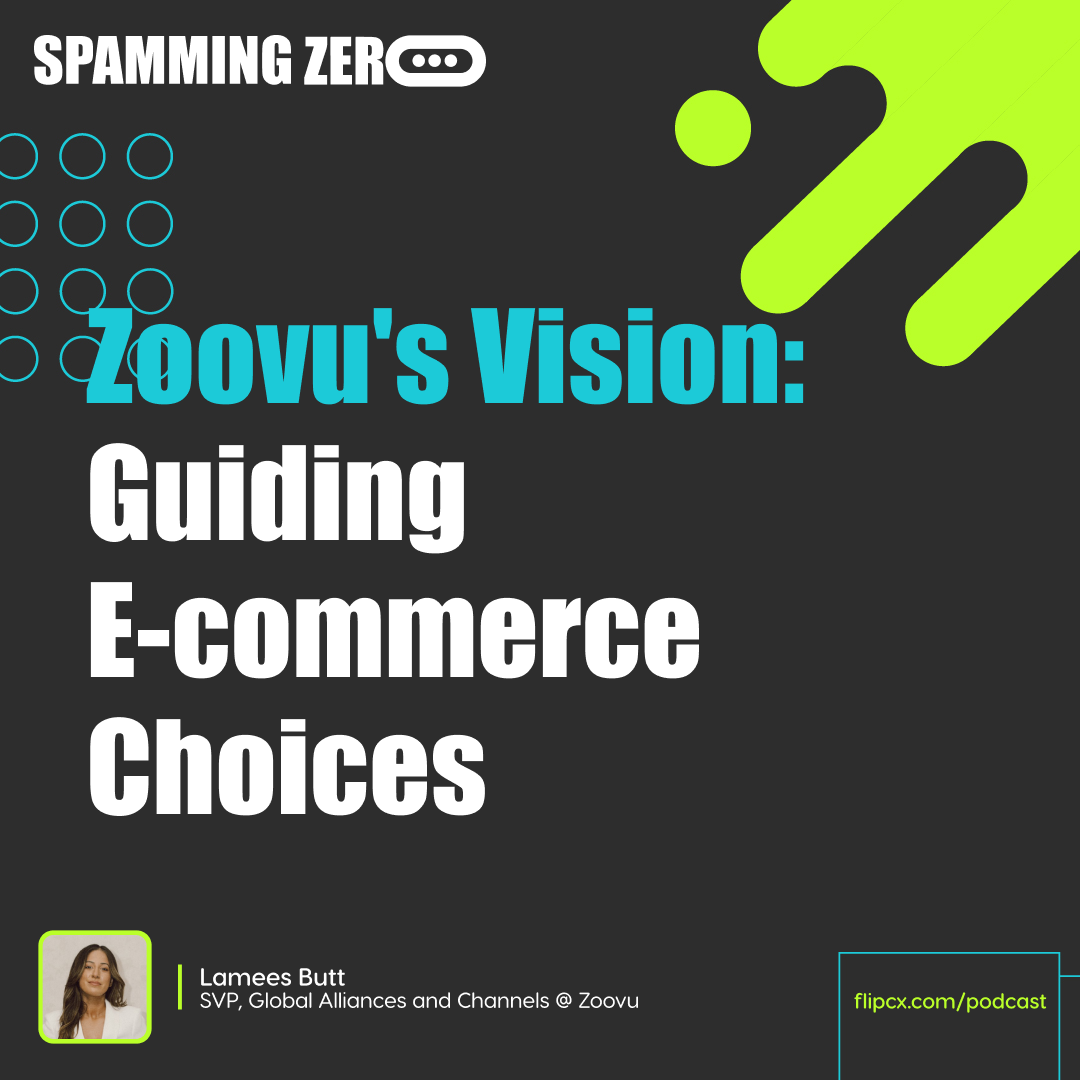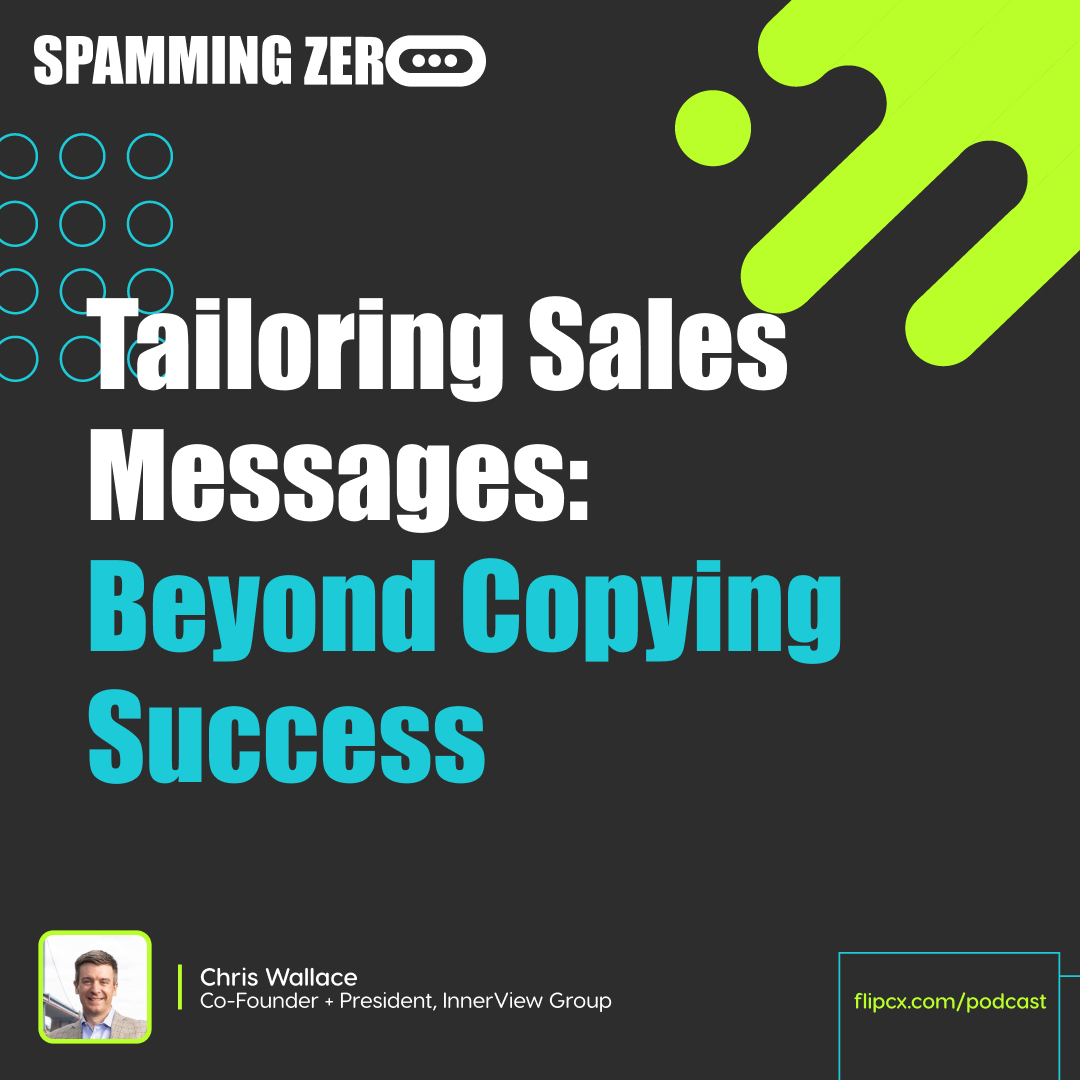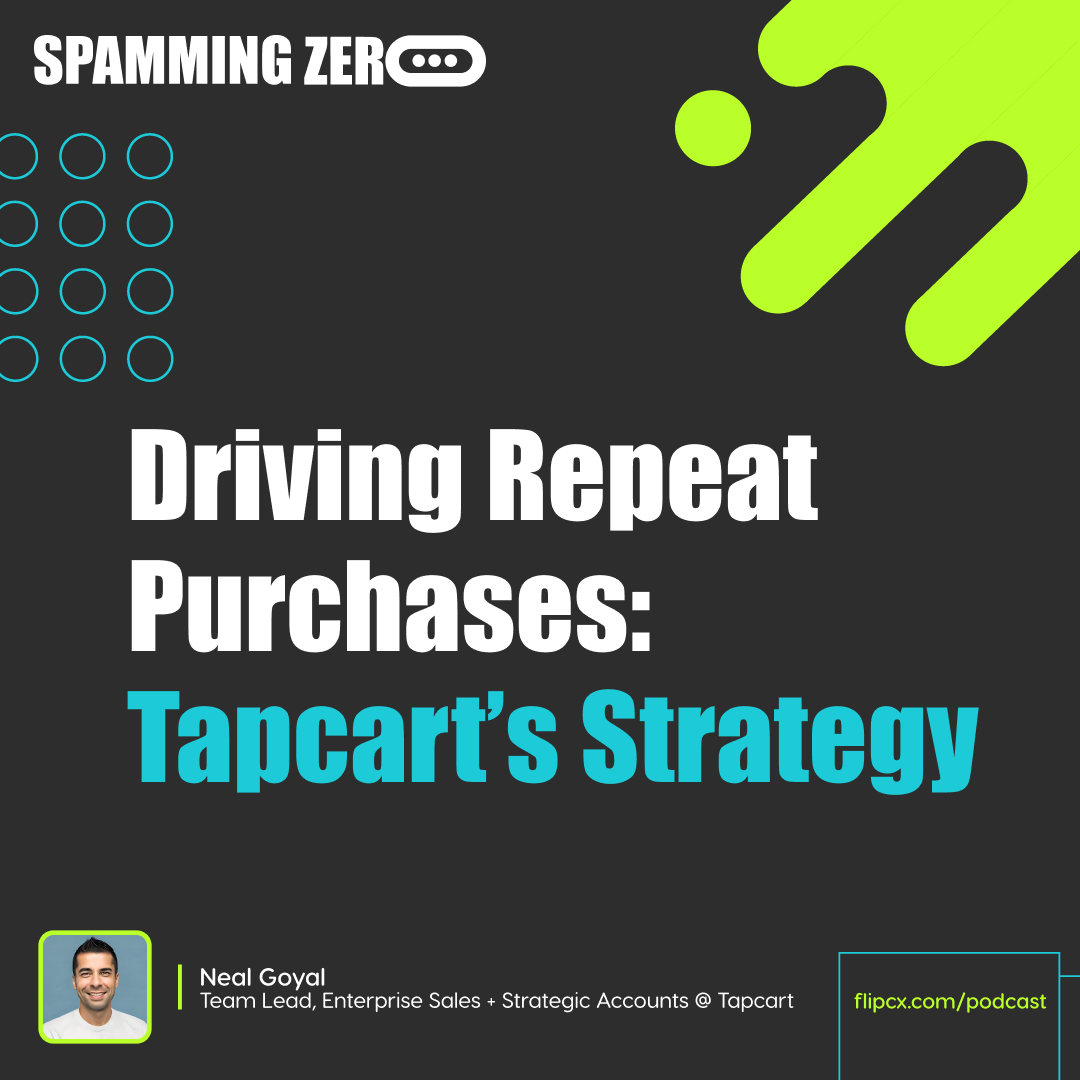Episode 3: Why Your CX Is Not Exciting (And How To Change That)
- 0.5
- 1
- 1.25
- 1.5
- 1.75
- 2
James: I'm James.
Brian: And I'm Brian.
James: And this is Spanning Zero. Welcome to Spanning Zero. I'm only one of your hosts, James Gilbert. Another one of our hosts is Brian Skiff, our CEO at RedRoute. Super excited about this episode because I have one of the best characters in the customer experience space joining us today. You are not going to want to miss this. We are going to be talking about customer experience, but specifically why your customer experience is not exciting. Yeah, that's right. We're calling you out. All you people that are doing customer experience, we are calling you out right now. We're going to have Nate Brown join us. Yes, that's right, the Nate Brown, the CH champion back in 2014. He's going to be representing his belt. He is a CX accelerator community creator, a student of customer experience and the current senior director of CX at Arise.
Nate Brown: Let's go.
James: Thanks for joining us, Nate. So excited to have you. Brian, start us off, my friend.
Brian: First question, Nate, to get us going. First of all, so great to have met you and obviously excited for this chat today. First question, getting us started, one of my favorite questions to ask people in CX when I first meet them is what is your CX love story? What is the moment that you fell in love with CX?
Nate Brown: Yeah, I think it was talking to Jeff Toister. I think he was the catalyst of my love story. I was struggling as a customer service director inside of a major enterprise organization. I was just hitting this internal friction point inside myself of we're solving the same remedial problems again and again. These customers are having to call us again and again with the same friction point, the same problem. Why do I have an entire team where they can only think about these handful of things? Why don't we go upstream and actually try to resolve this more intelligently and think about the customer relationship as a more macro level? The word I was looking for was customer experience and Jeff Toister, Annette Franz, those couple of folks and a few other mentors helped me find it in those moments. And once I found it, oh, the love happened so quickly.
James: All right, here's my icebreaker question. What's your favorite suit? Give me a color. Give me a design. What is it?
Nate Brown: I do have an electronic reindeer suit that I especially love to bust out in the holiday season and wear to church because all the kids at church really love when I show up in my suit. So, that's my favorite suit that I have.
Brian: I do appreciate that you broke out the red for us today.
Nate Brown: Yeah, right? I have to. I have to. This is definitely one of my favorites. Although I will say they call this suit the red devil and I have a friend that calls me the CX devil and I just think that's not right.
James: So, I'm going to start us off with the question on the topic that we're going to be talking about today because I do think that this is a very, very edgy topic and I want us to give the audience an opportunity to be, for lack of a better way of putting it, you're going to be put on spot today. Here we go.
Nate Brown: I love inaudible
James: We have gone for this idea of seamless experience, the idea of frictionless, to now, what's next?
Nate Brown: Yeah. Okay. I mean, customer effort score was introduced in 2011, right? I'm looking at my calendar to figure out the year. It's 2022. It's been a hot minute that we've been in the effort mentality, right? I still think that a lot of organizations need to be there and thinking about seamless frictionless experiences, especially when we think about digital experiences because this isn't happening yet for a lot of organizations. We got to shore that up. But if we think about what's next, let's hit that foundation point. Let's make it frictionless, and then what? Then let's make it good. Let's make it a little bit fun and exciting, right? I mean, we just keep thinking about how we can make it clean and that's great. We need to start there, but then let's dream up how can we add a special element in this that has the person coming out of the experience not just feeling like they did what they needed to do, but also smiling, also feeling like they just had a really positive interaction with you? That's the next level.
James: And I like that a lot. Brian, you're smiling. Anytime you get Brian to smile, you know you've got something. Why you smiling, Brian?
Brian: Well, James, the first time that you and I met, you mentioned two things which go hand in hand. One is the idea of being unconventional and the other, which is the second leg of it, is the idea of the wow moments in the experiences that you're delivering to customers. And I'm just sitting here and I'm tying those dots together and it's like," Wow, it does not surprise me you guys have been great friends for a long time."
Nate Brown: James is a smart man.
Brian: That's my inaudible.
James: I learned from really smart people. That's what you got to do. I'm curious, when we think about fun, fun is very broad because it's so unique to the individuality of all of us as individuals. So when we think of a single touch point that is the most critical for a brand to have, what is that touch point that is the most critical for it to be fun in your mind?
Nate Brown: Yeah. I mean, I think it's... Let's start with first things first, it's the marketing touchpoint, it's the awareness touchpoint that matters the most. And I've got a couple marketers on the line, so they're nodding their heads, but let me explain. James Dawkins, what's up. I got to be able to shout out my man James Dawkins. So when I had him with me in Nashville and we did a CX PA webinar together, he was going into this brilliant context around how important expectations are in the work of CX. When we set clear expectations and manage them and deliver upon them and sometimes even over deliver, then we're doing good. We're creating good experiences here. So much of the expectations that we create and design in the minds of our clients happen in the marketing area. We're introducing them to a promise. We're saying," World, here we are. We're a company. We're promising something that we're going to deliver for you. We're going to be the guide for you in a special way. You're the hero of this story, to use a story brandism, but we are the guide and we can guide you in a unique way." So, what is that expectation that we just set and do we have the ability to actually deliver on that? Because so much of that truth is going to impact downstream how the customers feel about us.
James: You know what's funny?
Nate Brown: Tell me.
James: I think about this idea. Brian brought up the wow moment thing. I don't know if I can claim that as my own. I don't know. Maybe I can, but it is something that I just truly believe in, right? You have an opportunity as marketers to create a really good first impression with your brand. That's your job, right? And what's so fascinating to me, what I find really funny about what you said is there's so many companies out there that have a brand promise and none of them deliver on it.
Nate Brown: Few. Yeah. Very few.
James: Right? What I meant by none of them is none of them are thinking about creating a brand promise so that they can actually deliver on it. You have all these early stage startups that are also doing the same thing. They're creating these brand promises and it has nothing to do with how actually how they can measure the outcome for a customer. Brian, we've been going through this right now, right? We might be getting ready to maybe do some new things at this organization and a brand promise is one of them. And what have we been talking about? It's got to be measurable. It's got to be something that you can tie tangible feedback and outcomes back to the customer. And I think this is a fundamental thing that businesses need to do more of is reinvent that brand promise so that it can be something that your team can celebrate delivering to the customer experience.
Nate Brown: There's a classic HBR exercise called the company identity matrix, came out in the 90s and it's still one of the most brilliant marketing/ CX exercises that we can do, because it depicts so well this brilliant overlap that happens organically in good companies. You have the core, which is your competencies. You've got your culture, the unique attributes that made you go into business in the first place. Then, you step up to the next level. That's where you start to define your personality, your brand voice, the expression of who you are. And then at that top layer, okay, we're ready to go out to the world and position ourselves to a unique group of customers that belong to us because we can serve them really well. Who is that group of customers? How can we leverage our culture and our competencies and our brand core and our voice together to make a remarkable difference in these communities and improve the lives of this group of customers and your ability to do that well, consistently and measure that, that's where these things come together. You've made a promise and you delivered on it.
James: Totally agree. Brian, you're smiling. inaudible
Brian: Yeah. I got the smile going again. It's interesting because I feel like, you start with the brand promise and then the next step from there is... You talk about those first touch points, right? And marketing really being the people that are delivering those first touch points and those experiences, right? There are a lot of great marketing teams that are out there and a lot of good first touch experiences at the top of that buying journey. And then you talk about fulfilling the brand promise when the rubber meets the road and somebody purchases the product and they experience the bottom of the funnel, part of it is obviously, does the product match what you are selling? But the other piece of it is what is the experience that you're delivering to the people that have bought your product? Not to spiral too much into a rabbit hole, but I think Verizon or one of these massive phone companies right now is doing a whole TV ad campaign where... They've been out for the last, however many years offering free phones to new customers that come in and now they're doing this thing where they're saying everybody can get free phones for some amount of time and starting to actually realize that a lot of the people that they're talking to are already their customers and treating them with some love, I guess. But it's almost like there's this just complete crumble that happens in a lot of organizations when you go from the marketing experience, which gets a lot of love in a lot of organizations and then the instant that somebody pays you, they swipe their credit card, they become a customer, they buy the product. Suddenly the experience degrades.
Nate Brown: Yeah. There's the running joke in the telecom space and not to pick on any particular vendor, but it's the idea of, I've now been under the same internet package for 10 years and I'm spending 320% more than I did when I first signed up. It's that idea of that joke... No, no, no. That's not going to fly anymore. I mean, your brand promise is now what one customer says to another. You don't get to depict outward to the world what your brand promise is because they're not going to believe you. We blew it. We blew it in the 90s and in the early 2000s. What they believe now is what actual customers are saying about you.
James: Well, and for the record, people will go to great lengths to be unconventional so that they get the same rate as somebody... This is a true story. Let's go down this inaudible hall of the internet, right? I was a customer for a very long time of a particular internet provider and I hated the fact that they would not give me a rate that a new customer would. So you know what I did? Me and my wife swapped. Every year, we would cancel our service and we would sign up under the other person. I'm telling you. Guys, it's gamified. If you are a brand listening to this podcast, they are gamifying you because you're not solving their problem. They will, it will happen and it's just a matter of time before they figure out how to do it. So I want to...
Nate Brown: If you're trying to suppress your customers and create a situation where you're screwing them over a little bit. Yeah. They're going to find a way around that.
Brian: Yep. How big is the gap between the quality of experience that gets delivered by a company in a monopolized industry or oligopolized industry versus the experience that gets delivered by a company in a competitive industry, right? Even that just has such inaudible impact, right? We pick on the internet providers...
Nate Brown: That's something we talk about a lot. There are industries that feel like they're experience economy proof and the age of the customer doesn't impact them. It's hard to find that now. I mean, even the United States government has created a CX institution inside of their government system. That happened a few months ago. So if the US government can do it and you see these utilities companies that used to just be basic services, no competition, this and that. They are now thinking about experience design, realizing that competition is creeping in and that people have an option of where they get their energy now and choices that never used to be available. They're having to think about how they serve these communities in new ways. So I don't think there's an industry out there or a vertical out there that is completely immune to having to think about the customer experience.
James: Nate, we have talked in great lengths many times throughout our relationship together about the next item that I want to dive down into and that's the idea of being proactive with it. So we have this fun element, right? And we want to make customer experience a lot more fun. There's a single touchpoint marketing can provide to make it more fun. So now, let's dive into how can you make fun experiences also proactive?
Nate Brown: Yeah. I mean, if we think about the customer service element of this, I mean, it's generally been in the customer service area that we're just waiting for volume to come in. Just waiting for that ticket to show up or that phone call to show up, whatever that is. But I mean, think about now and the CEO of Officium, Jonathan Shroyer, it introduced me to this great idea. I mean, think about Ironman and J. A. R. V.I.S. The fact that J.A.R.V.I.S is just there as a great guide, as an incredibly effective service vehicle that can help Ironman to overcome all these challenges that he's facing and even identify challenges before Robert Downey Jr did, and be able to see those, predict those, bring that information to him and help him to circumnavigate these challenges. That's what support is going to be in the future. A lot of it will be driven by whatever this becomes, whether this is some wearable device or whatever. This will become our HUD and in it, we'll have the ability to very intimately see and understand and proceed and be proactive in serving our customers.
James: Man, talk about nerding out. I mean, inaudible I'm a massive nerd when it comes to that stuff. You've just spoke to my heart. J. A.R.V.I.S. And Ironman? I have never, ever, ever, ever, in my entire life, ever heard anybody talk about how J.A.R.V. I. S. could potentially be the future of customer service. That is pretty awesome when you...
Nate Brown: Don't you think though? I mean, and we're close. I feel like we're getting close. I mean, it's amazing how much of the experience is morphing into this device. We're looking for this device to guide us in all these different interaction points with different brands. So, I mean, it's just a matter of time before that gets elevated even more and these brands can almost see through our eyes and help us to understand the world around us and proactively serve us as the guide.
James: I'm excited about the future of customer experience for sure. Yeah. If it turns into J.A.R.V. I. S. holy smokes, I'm going to be blown away.
Nate Brown: Yeah. And think about the voice of customer element of that. I mean, if we're looking through our customer's eyes and seeing this and understanding this, we're not going to wait for the customer to fill out a survey to understand what their experience was. We were there. We experienced it with them in our ability to capture that interaction and the critical elements of that interaction and to be able to measure customer sentiment out of that or whatever the metric of the day is at that time. And right now, I feel like customer sentiment has taken the CX world by storm, because it's so easy to get it and to automate, text or video or words over a recorded call, whatever it is, you can absorb that interaction so effectively and measure it very well and compare you to others, compare you to you across different touchpoints and you can really understand how a customer feels about its interactions with you and how those interactions are impacting their loyalty towards your brand. It's a new era for CX already.
James: Completely agree. I got a few more questions I can weave in here.
Nate Brown: Let's do it.
James: But Brian what's on your mind, right now?
Brian: I was just thinking about, as you were talking there and you outlined this picture of the future and then where my head goes, it's like," Okay, what are the steps that need to happen in order to get there?" And you bring up the sentiment scores and being able to, relatively easily at this point, access that data. My mind was going in eight different data direction, which for me goes to... One of the things that I like to say a lot is CEOs take time to talk to customers because they find it to be that valuable that it's worth them taking the time to do it. And your CX team, your support team, that's all they do all day every day. So, when I start to see... I've seen some examples where CX is getting rolled in with customer intelligence, that's a super interesting model to me. And I think that if you're talking about the data piece and how that drives it. And so, I just think that there's so... I mean, we got what, a couple minutes left in this podcast? But there's a whole world in the data and I agree with the direction that you're talking about, where the data just becomes such a big part of delivering that next level experience, those fun moments, those wow moments and the ease, all of it. So, that's where my...
Nate Brown: You're hitting into something really important there, Brian and I love your mentality as a CEO in this and how excited you are about this customer centricity conversation. It's awesome to see that. There needs to be many more CEOs like you, because it is rare. You are special in this regard, but people ask me all the time," Where should I embed a CX department or a CX leader or a CX team?" And I'm just like," Who cares? I don't care." Look, the job of the CX leader is to get everybody else to care about an do CX. I don't care where you put them. They're literally just going to infect those around them with the ability to take their function, their superpower, whether that's IT and they're in charge of digital experience, whether that's HR and they're in charge of the employee experience. Whether that's support and they're trying to get more proactive. I don't care where you put CX, they need to infiltrate each of these different areas of your company and bring CX to them and help them to make it their own and to represent customer centricity in the way that only that team can. Only then can you bring that together and harmonize that into a larger CX strategy. The CX team can't do CX for your organization. They can't do it. You got to have that CX team unlocking it across all these different areas.
Brian: So do you think about it as step number one, there needs to be the executive buy in which will deliver the budget and the sign off on it. And then, almost the next most important thing is that people, evangelistic ability internally and then actually orchestrating those, right? All of those changes across the customer journey. Is that almost the last step of the puzzle and in some ways, almost the easiest piece of the puzzle, if the two layers above that are there?
Nate Brown: Yeah. Good point. I mean, I think to accelerate very quickly and summarize in my mind how it works, generally, you do have an executive that galvanizes this as an urgent initiative and to use a John inaudible with leading change, you have to have a sense of urgency around change of any kind or else people will not change. So something has to happen to light the fire inside the organization. Then you do ordain someone to bring that change to the organization and set up the guide rails, bring the strategy, bring the intelligence to the initiative, but they're not doing it. They're simply bringing people together in the form of step three, a CX change coalition. You're bringing these key stakeholders together from these different representative departments. You're galvanizing them under this one CX leader who they don't have to report to the CX leader, but they need to be guided by the CX leader, who's helping your brand voice, helping the CX strategy to stay consistent. Because otherwise, what will happen is everybody will take the idea of let's do CX and go do it differently than one another. And what that looks like to your customer is this, who they can't relate to you as a brand because you're all over the place with your CX. It doesn't make sense. You're not coming through with the brand promise and the brand voice. So that CX leader helps to coordinate and align that, but it's everybody else that needs to intrinsically be motivated. Yeah, this is the way we do this. This is how we gain market share, it's by serving people better. And then you do start, as you said, Brian, it starts in the house. Denise Leone has that brilliant metaphor of you are giving a gift to your people first inside the company. That gift that you designed for them, that employee experience, that's what they have to give to their customer. So you don't get to skip that step and start designing a customer experience without having that gift first that you've given to your own people. Otherwise, they've got nothing to give. It's just smoke and mirrors, this customer experience that you've designed without them getting to live something special first that represents your brand problems. So I mean, those are the stack.
James: inaudible We got to ask one last question because we got to make every guest feel a little bit uncomfortable on this show. inaudible Tell us about a very unconventional experience that you've had that your wife or your kids or your family don't know about.
Nate Brown: Okay. I don't have to reach too far back. I was in Vegas. Isn't that always where the story's always going to start? And y'all, I'm a dork. I don't do these things, but I was at the HDI conference and they somehow got the entire nightclub at MGM grand. The really fancy nightclub, the kind that has the Q in front and there's some social order that I do not understand at all where certain people go in and other people wait. I have no idea how any of that works, but we got to go in there and the Blue Man Group is up there and they're partying with us and they're spraying stuff at the air and just being all fun like the Blue Men are and y'all, I went nuts in there. I literally went so crazy in there that I incapacitated myself with a leg cramp and had to go sit down in a corner. But it was so much fun. I'll never go in a nightclub again, but it was just so fun.
James: I love it. Nate. Thank you so much for joining us.
Nate Brown: It is my pleasure.
DESCRIPTION
Riddle me this. What do Ironman, the Blue Man Group, an electronic reindeer suit, and excellent customer experience have in common?
Well, for one thing they’re all pretty damn memorable — and for another, they all come up in this week’s discussion, on RedRoute’s Spamming Zero Podcast.
Which makes sense, because our honored guest this week is one of the most memorable individuals you’ll ever meet. Nate Brown is Senior Director of CX at Arise, Co-Founder of CX Accelerator, and the embodiment of contagious enthusiasm when it comes to customer experience.
He joins our hosts, Brian Schiff and James Gilbert for some real talk on why your customer experience is not exciting (and how to turn that around) — this week on Spamming Zero.
What’s Covered?
- Nate’s CX “love story” (aka the moment he fell in love with CX)
- What’s next in the world of customer experience
- For FUN CX: the single most important touchpoint your brand MUST have
- Culture, Competencies, Brand Core, & Voice: leveraging it all
- How to keep your customers from “gamifying” you
- Exciting AND proactive: top tips for making experiences both
- What it really takes to incorporate CX into your entire brand
- One of Nate’s craziest experiences (hint: this is where Blue Man Group comes in)
- And more
Ready for more fantastic Spamming Zero conversations ahead? Listen, rate, and subscribe on Casted, Apple Podcast, or Google podcasts.
Today's Host
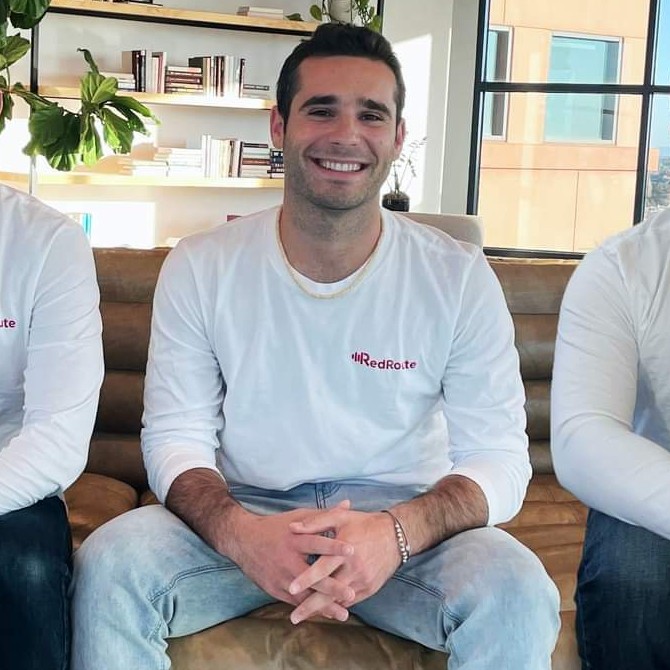
Brian Schiff
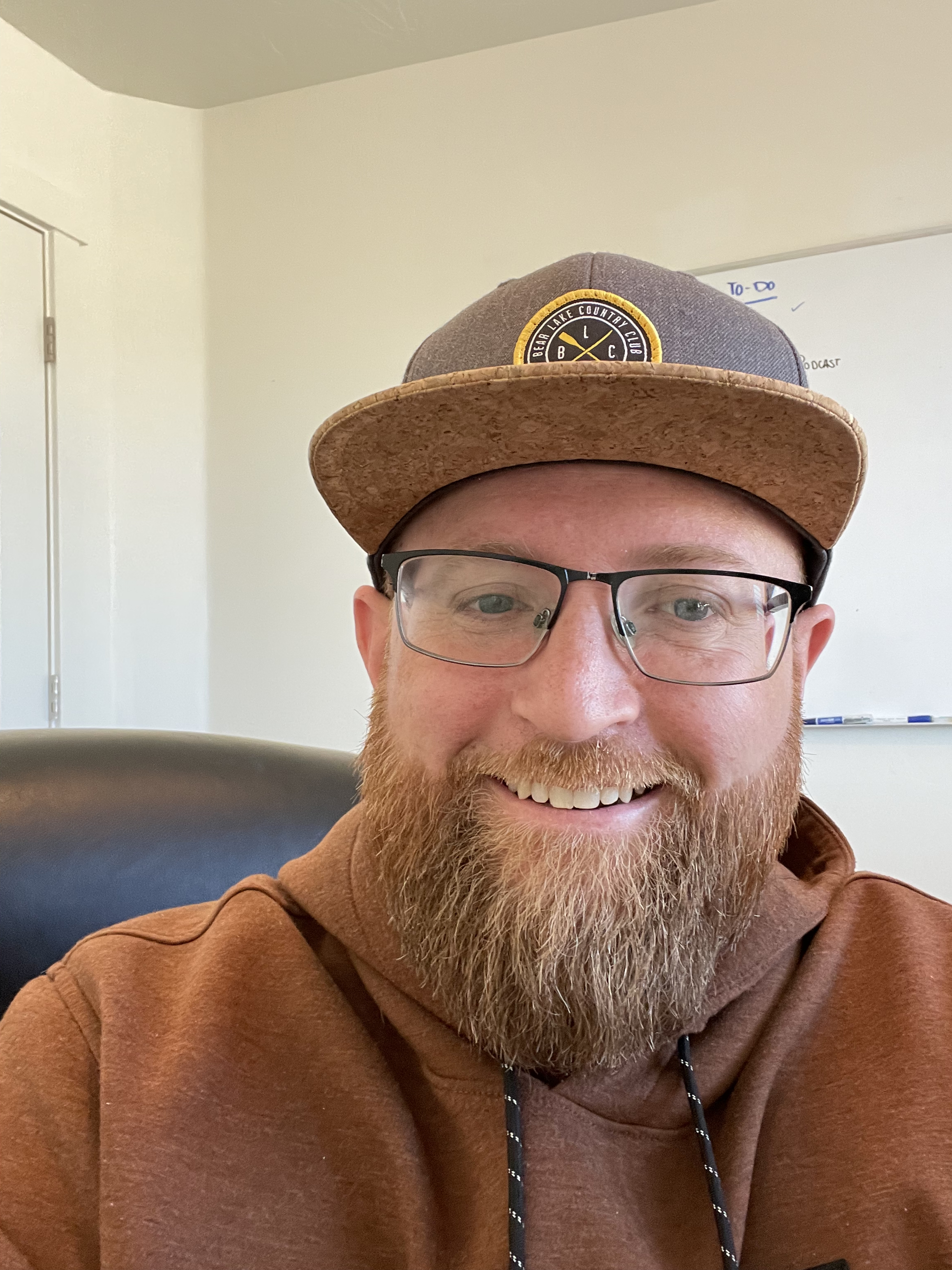
James Gilbert
Today's Guests



